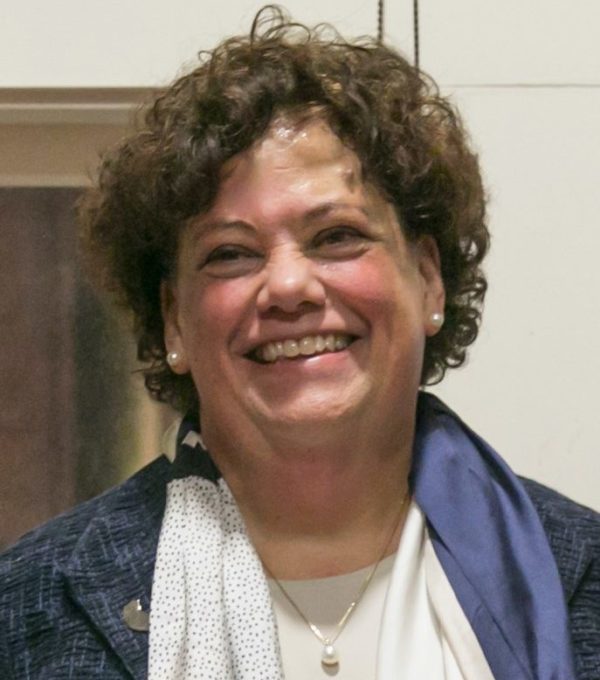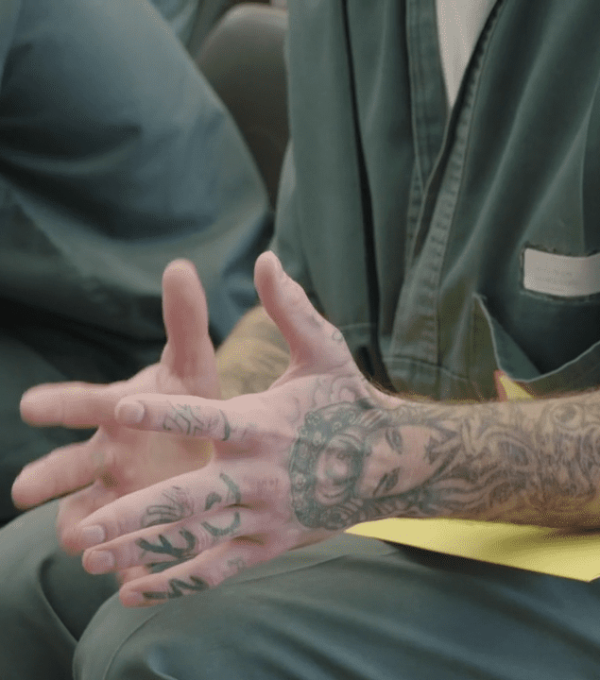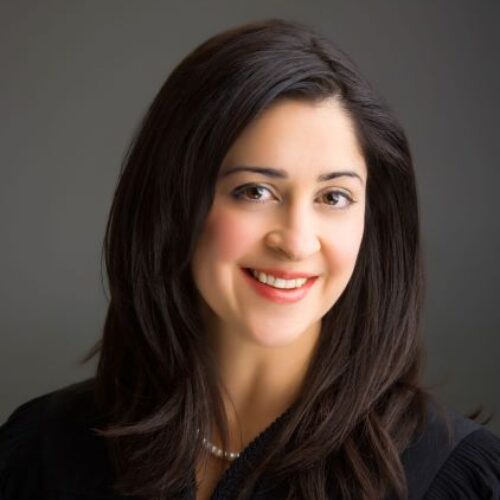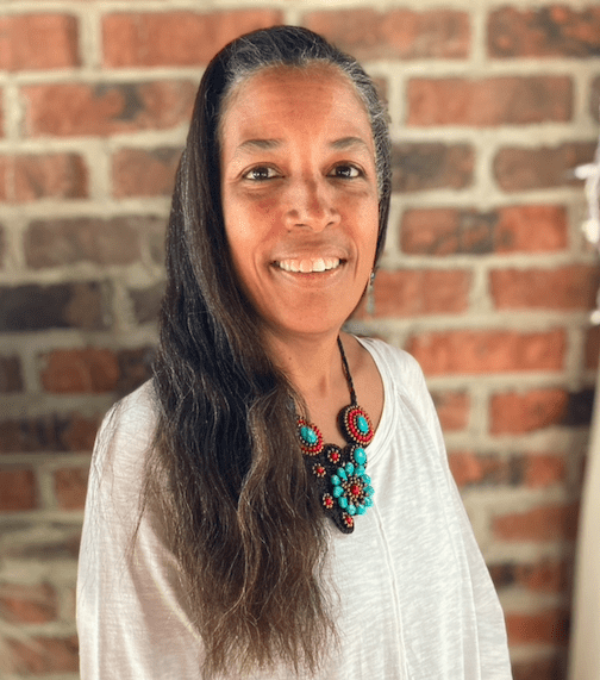
From Treatment Courts to the Supreme Court: Q&A with Three State Supreme Court Justices
The Council of State Governments (CSG) Justice Center and the American Psychiatric Association Foundation have partnered to highlight leaders working to address mental health needs among people in the criminal justice system through innovative practices and programs. This feature is the fourth in a series under the Judges and Psychiatrists Leadership Initiative.
Treatment courts, which can include mental health and other specialty courts, have been around for decades. Across the country, they are used to divert people with mental illnesses and substance use disorders from jail or prison into treatment. Members of the Idaho Supreme Court have long been committed to advancing the efforts of treatment courts and have found them not only personally gratifying but also beneficial to their professional careers. The CSG Justice Center recently interviewed three of the five members serving on the court: Chief Justice G. Richard Bevan, who presided over the Fifth Judicial District’s Mental Health and Veteran’s Treatment Courts for 14 years while serving as a district judge; Justice John R. Stegner, who established the Latah County Drug and Mental Health Courts; and Justice Gregory W. Moeller, who presided over both the Upper Valley Drug Court and Mental Health Court, and now chairs Idaho’s Treatment Court Committee. Each of these justices was eager to speak about how their experiences with treatment courts have affected the trajectory of their judicial work and shown them how they can meaningfully impact people in the criminal justice system.
Editor’s note: Answers have been edited for length and clarity.

From left to right: Justice Stegner, Justice Moeller, and Chief Justice Bevan. Photos provided courtesy of the judges.
You’re all former treatment court judges. What was your motivation for establishing or presiding over a treatment court initially?
Justice Stegner: I was initially appointed as district court judge for Latah County in 1997, and it quickly became obvious that the methods being used to sentence people with behavioral health challenges were ill-equipped to deal with the problems they were facing. As a result, I helped to start a drug court in 2002, but it became clear that it was also not adequate, so then—in partnership with social workers and psychologists who provide wraparound services—we established the mental health court. In doing so, we received support from both sides of the political spectrum.
Chief Justice Bevan: When I became a district judge in Twin Falls County in 2003, there was just the one drug court, but with help from our trial court administrator I was able to establish a mental health court in 2005. From there, I understood that solving problems is something courts can do—and I think all three of us brought that mindset to the Idaho Supreme Court in terms of our desire to go beyond just presiding over cases and sentencing people, and instead working to make meaningful change.
What did it take for you to establish your treatment courts?
Justice Stegner: I first had to submit an application to the Supreme Court committee to get approval, and then had to receive support from prosecutors, public defenders, the department of health and welfare, and the county itself. It was a very long process of making sure we had all the resources in line. But after everything was approved, we were able to begin serving individuals who were high needs and at a high risk of recidivism.
Chief Justice Bevan: When the treatment court was first started, it became clear very quickly that there was a need for a full-time coordinator, independent of any of the other members of our team, who could meet with participants often and keep track of their progress. While we faced challenges, the courts continued to improve over time, including through a better team structure. We now have people who are well-committed to the work and probation officers who are better trained.
Justice Moeller: When I became a new judge in 2009, the Upper Valley Drug and Mental Health Courts had been operating successfully for about 10 years. When I began presiding over these 2 programs, my main goals were to identify best practices, make sure we were doing things right, and reevaluate the things we could improve. Although I was able to hit the ground running, there is always a learning curve for judges new to this work, and one of the big things was just becoming comfortable with the terminology and understanding the science and treatment methods available.
How were you able to gain community and legislator support for the use of treatment courts?
Justice Moeller: I think most people have either suffered personally from a mental health crisis, have seen a loved one go through it, or have had constituents whose lives have been impacted, so it is just a prevalent part of everyone’s life. After I began presiding over the treatment courts, I had a lot of opportunities to invite colleagues and legislators to attend, and they were able to see the good work that was taking place. It seemed to resonate with them as a positive solution to a pervasive problem.
Based on your experience as a judge presiding over a treatment court, what kinds of training do you think judges should receive to be most effective?
Chief Justice Bevan: Along with being educated in trauma-informed treatment and care, judges need to have a good knowledge of how to address trauma when talking to folks one-on-one. Knowing about trauma, and its effect on people, is important so that we do not create greater harm while getting the messages we need to send across.
Editor’s note: JPLI conducted its judicial training in Idaho in Fall 2021. For more information and to apply for training, complete this application form.
Looking to the future, what part do you think treatment courts and the judiciary generally will and can play in ensuring equity throughout the courts system?
Justice Moeller: Well, equity can look different from place to place. In rural areas, such as in the Seventh District (in eastern Idaho), a lack of access due to logistical constraints and long travel distances has been an issue. However, if one good thing has come from the COVID-19 pandemic, it is that the judiciary has quickly adapted to and has become nimbler and more comfortable with technology, including things important to treatment courts like telehealth services. This has reduced commuting barriers and enabled individuals in rural areas to participate more fully.
Chief Justice Bevan: Back 10 years ago, and even when I left the district court in 2017, the issues of inequality brought to the fore in 2020 [with the protests over the killing of George Floyd] were not even on our radar. People of color seemed to be succeeding in our court, but there was not a real focus on whether this was the absolute best we could do for them. We are now more mindful of additional things judges can do to be educated about how to better serve people from various racial and ethnic backgrounds.
Justice Stegner: Idaho recently expanded Medicaid through the Section 1115 waiver process (which authorized the state to receive federal funds for certain individuals who are engaged in our treatment courts). Medicaid expansion has created a great deal of flexibility in the court’s treatment court budget. For example, it has enabled us to increase treatment funding to the various districts, which has improved access for people who previously might have been unable to participate in treatment courts due to funding constraints. Currently, approximately 85 percent of participants in our mental health courts are eligible for Medicaid benefits. Those who have graduated from a mental health court continue to have access to Medicaid benefits and therefore to needed health care (both mental and physical) post-graduation.
There can sometimes be a negative perception about presiding over treatment courts when it comes to career trajectories for judges. How has presiding over these courts impacted your professional trajectories?
Chief Justice Bevan: First, I think that best practices for all judges require that we be trained to preside in treatment court settings. Idaho has certainly led the way in this regard, and my background was a significant plus for me as far as my eventual appointment to Idaho’s Supreme Court. It also shows those who select judges for administrative leadership or for higher appointments that you are (1) willing to sacrifice (there is no extra pay for the extra work) to make a difference for the individuals and for the criminal justice system, and (2) you are willing to take a leadership role and leave your comfort zone to have a far-greater influence as a trial judge. Presiding in mental health and veterans’ courts was the highlight of my judicial career, and I would recommend it to anyone.
Justice Moeller: I have never experienced such a perception in Idaho. Here, treatment courts are highly regarded within the judiciary and by the other branches of government. For example, I was interviewed three times to be on the state Supreme Court by the Idaho Judicial Council, and an additional three times by the governor. Each time there were positive comments about my treatment court background and questions about why I felt they were effective. I think this interest stems from mental health being a universal issue; in fact, it might be one of those very rare issues that we can all agree upon because it transcends politics and impacts us all.
Justice Stegner: I do not know if it is a career trajectory to be a treatment court judge, but it certainly did not hurt my chances of getting onto the Supreme Court. As far as presiding over the courts, while being a trial judge is challenging work, anyone who is contemplating operating a treatment court would be well advised to know that it is, in my experience, the most gratifying work I have done as a judge.
About the authors


You Might Also Be Interested In

Judge Nan Waller has taken her increased awareness of the challenges that…
Read More
START NOW is a skills-based, manual-guided group psychotherapy program that was developed…
Read MoreThe CSG Justice Center Advisory Board establishes the policy and project priorities of the organization. The board features…
Read More"AOT is a complex community intervention that can be effective or not depending on how it is implemented.…
Read More Finding Solutions to Complex Criminal Justice Issues: Q&A with New CSG Justice Center Advisory Board Member Justice Briana Zamora
Finding Solutions to Complex Criminal Justice Issues: Q&A with New CSG Justice Center Advisory Board Member Justice Briana Zamora
The CSG Justice Center Advisory Board establishes the policy and project priorities…
Read More Involuntary Treatment for Patients in the Justice System: Q&A with Dr. Marvin Swartz
Involuntary Treatment for Patients in the Justice System: Q&A with Dr. Marvin Swartz
"AOT is a complex community intervention that can be effective or not…
Read More










